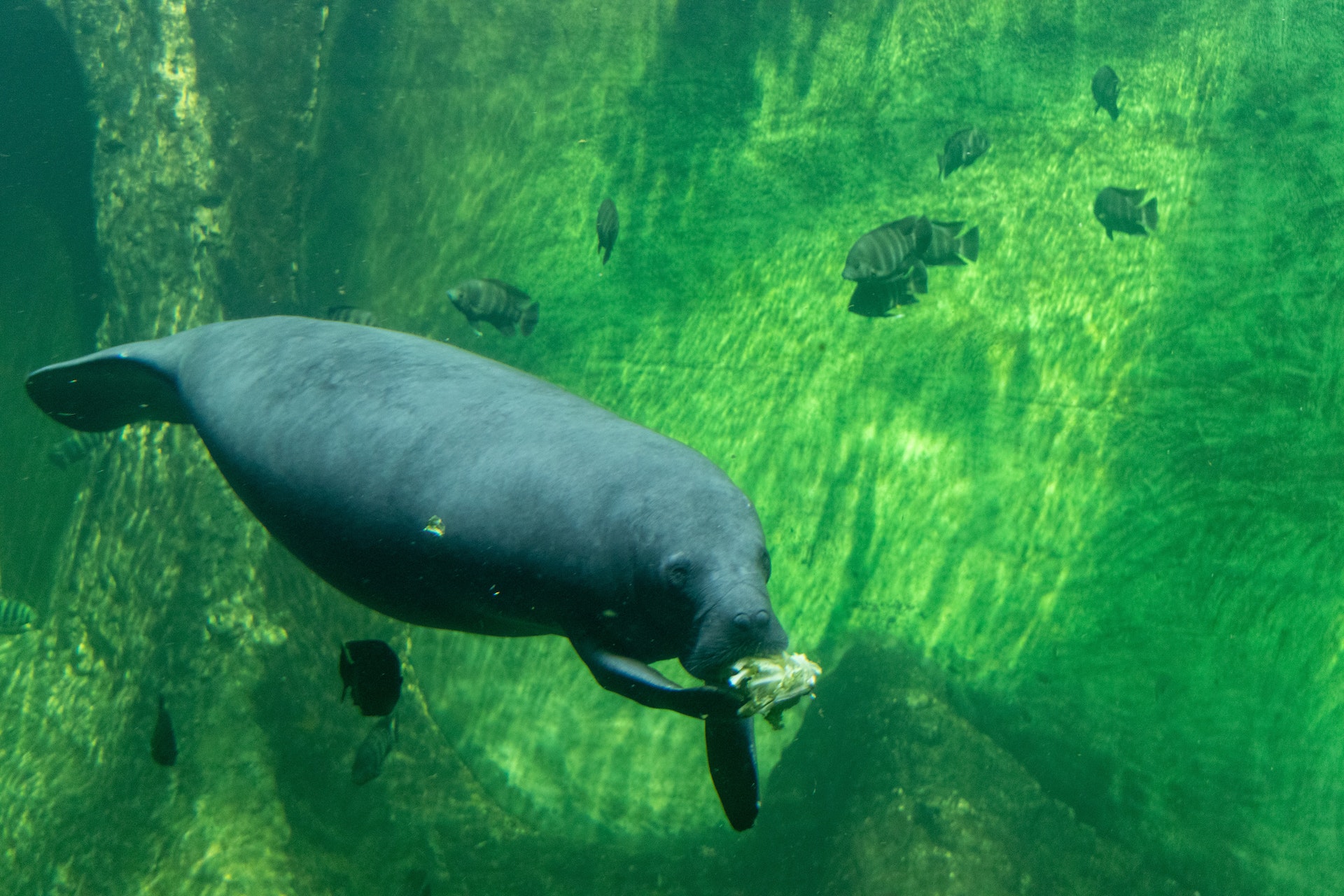The manatee is a friendly mammal that lives in the southeastern United States. It is also in Mexico, South America, and Africa. It has a stubbly snout, gray, blackish, or brown skin, and a body that is tapered to a rounded tail flipper. Their bodies can be as long as 13 feet and they can weigh as much as 1,300 pounds.
Contents
Where the Manatee Lives
They swim in rivers and coastal waters and can swim as fast as 15 miles per hour for brief periods of time but usually swim at about five miles per hour. Their tails propel them along as they glide to their next destination. They usually stay in the warmest water possible, and would only travel to the northeast – they have been seen as far north as Massachusetts — in the summer. They have very little body fat and they can feel the temperature of the cold water. They usually live along the shore where the seagrass and eelgrass are with access to deeper waters where they go to feel protected. The manatee lives as long as 69 years.
History of the Manatee
Manatees are relatives of the elephant and more than 50 million years ago they evolved from the land animals that elephants evolved from. Christopher Columbus and other explorers said that they had seen what looked like female sea creatures swimming in the ocean, which began the legend of mermaids. It is now known that they were seeing the figures of manatees.
Manatees Spending Time with One Another and Humans
When you see Manatees, they are usually either alone or in a small group of a half dozen or fewer manatees. Manatees are always in the water and breathe air at the surface. They can be underwater for as long as 15 minutes, but when they swim they need more air and come up for it at least every three or four minutes.
Manatees communicate with underwater squeaks, chirps, and grunts, which is how mothers give their calves instructions when they are helping them learn about being a manatee and what they should do.
Wild manatees spend time with humans and even will swim next to them when they are snorkeling and on boats that are anchored along the shore. In the warmest water in the U.S. where they are, in Florida, they reproduce all year and give birth more in the spring and the least often in the winter.
Manatee Safety and Laws
Hunting hurt the manatee during the 20th century. Their species was threatened by hunters who wanted their skin, bones, and oil. There are now laws protecting these gentle animals. Now the biggest problem with keeping them safe is motorboats crowding the waters and crashing into them where they usually are in shallow waters. Loss of habitat is an additional problem. If new areas are built along the coast of the waters where they live, the sewage, fertilizer, and manure from the developments run off into the water and damage the manatee nesting areas.
Crystal River is the only wildlife refuge for the manatee that lives in the southeastern United States, the West Indian manatee. You can access the area by boat and can have a membership with the Crystal River Boat Club in Florida to have a boat for your vacation or visit to the area. This Adventure Boat Share Club membership helps you have a boat when you need it at Crystal River and three other waterways in central Florida.



